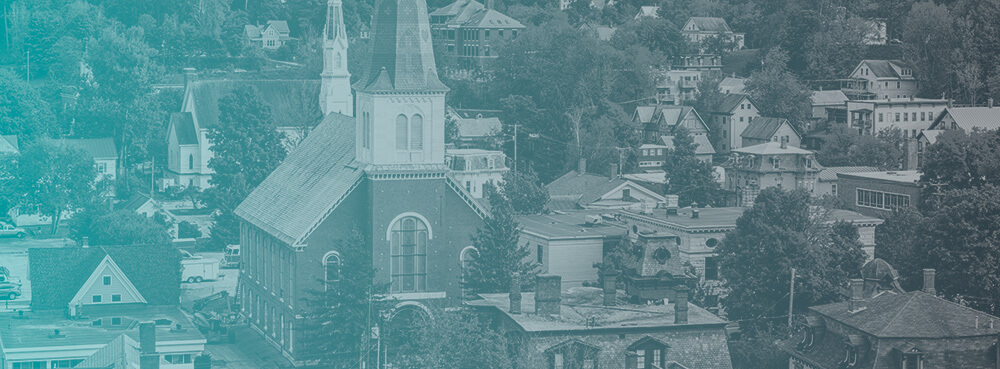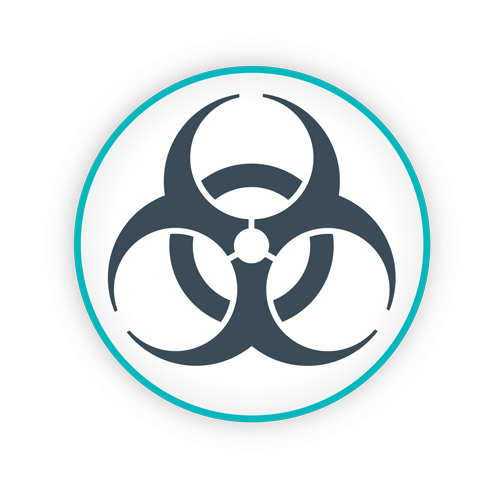Guide to Vermont Medical Waste Regulations

Vermont, the “Green Mountain State,” is one of the smallest in the country with less than one million inhabitants. That doesn’t mean that its medical services are substandard. Far from it. Excellent hospitals are found throughout the state, such as the University of Vermont Medical Center. Cancer treatment centers, outpatient surgical centers, and specialists throughout the state, while providing excellence in healthcare, also produce many types of medical waste.
All medical waste generators, from the largest hospital to an independent practice in a small town should know the difference between “regular” medical waste and hazardous waste. Types of medical waste that are not deemed hazardous are controlled by state laws and regulations. However, when it comes to hazardous waste, Vermont must follow the rulings of the Environmental Protection Agency (EPA) under the Resource Conservation and Recovery Act (RCRA).
Knowledge of the rules and guidelines of Vermont in regard to medical waste management and disposal as well as the federal regulations that are mandated by federal law is essential. This ensures protection for not only healthcare providers, but patients and visitors as well as the environment.
TOPICS WE WILL COVER
1 / Who oversees medical waste regulations in Vermont?
2 / Waste generator status determination
3 / Hazardous medical waste rules
4 / What about sharps waste guidelines in Vermont?
5 / Daniels Health supports cradle-to-grave approaches to medical waste management
Who oversees medical waste regulations in Vermont?
In the state of Vermont, medical waste regulations are under the purview of the Agency of Natural Resources – Department of Environmental Conservation (DEC). The state is currently in the process of revising and updating state guidelines for hazardous waste management to incorporate newer federal regulatory requirements.
In addition to Vermont’s state government, other agencies are also involved in medical waste management, including the Vermont transportation agency – medical waste haulers refer to the DEC for guidelines related to the generation, transportation, storage, treatment, recycling and disposal of hazardous waste. This program ensures compliance, tracking of hazardous waste manifests and ensures that hazardous wastes are transported to appropriately permitted facilities for treatment or disposal.
The Waste Management and Prevention Division provides information and guidance regarding solid waste and recycling programs, and solid waste management rules can be found here. Vermont’s Occupational Safety and Health Administration (OSHA) provides guidelines regarding sharps management and sharps container requirements.
One of the most important aspects of compliant medical waste management processes is the determination of medical waste generator status.
Waste generator status determination
Medical waste generator status determines the guidelines associated with the volume of waste produced by a facility, regardless of overall facility size. Vermont’s hazardous waste management regulations are applicable to businesses as well as non-household waste generators, including those that produce hazardous waste.
The generator status is made after determining the amount of hazardous waste that is generated on a monthly basis and not the volume of hazardous waste that is shipped within a particular month. In Vermont, three categories apply (VHWMR §7-307):
- Large quantity generators (LQGs) – generate 2,200 pounds or more of hazardous waste or 2.2 pounds or more of acutely hazardous waste in a calendar month.
- Small quantity generators (SQGs) – generate 220 pounds or more but less than 2,200 pounds of hazardous waste monthly, and less than 2.2 pounds of acutely hazardous waste monthly.
- Conditionally exempt generators (CEGs) – hazardous waste generators that produce less than 220 pounds of hazardous waste monthly and less than 2.2 pounds of acutely hazardous waste monthly.
It is the responsibility of the waste generator to ensure that regulations of the state of Vermont and the federal government are followed for compliance. This rule applies even after the waste leaves the facility.
All medical waste generators are required to make the determination whether the wastes they produce falls under the regulations of hazardous waste management. If so, an EPA identification number is required. This can be obtained from the DEC’s Hazardous Waste Program.
Be aware of storage regulations based on generator status. Accumulation time limitations apply. For large quantity generators, the rule is less than 90 days while for small quantity generators it is less than 180 days. Conditionally exempt generators don’t have accumulation time limits.
Manifests are required for both small and large quantity generators, but are not required for conditionally exempt generators – although if they are used, they must follow manifest instructions. Waste generators can find additional details regarding applicable regulations here.
Hazardous medical waste rules
The Agency of Natural Resources has a number of proposals underway for updating hazardous waste management regulations. Of special interest is Subchapter 2: Identification and listing of hazardous waste, including characteristics, a list of hazardous wastes in Vermont, hazardous wastes from specific sources, and acutely hazardous wastes.
Per the definitions found in the document, hazardous waste implies any waste or combination of wastes in various forms that can include but are not limited to do those that are toxic, ignitable, corrosive, and/or reactive, which can “cause, or contribute to, an increase in mortality or an increase in serious irreversible or incapacitating reversible illness…”
Hazardous waste management is defined as “the systemic and comprehensive management of the generation, storage, transport, treatment, including recycling and recovery, or disposal of hazardous waste materials.”
However, RCRA hazardous waste “means hazardous waste regulated under subtitle C of RCRA; it does not include other wastes regulated as hazardous waste by the State of Vermont that are not regulated under subtitle C of RCRA.”
Subchapter 3 contains specific information for hazardous waste generator standards for all size generators, while Subchapter 4 covers requirements for transporters of hazardous waste. Additional updates apply to manifests and reporting requirements and hazardous waste pharmaceuticals. In addition to state guidelines, federal hazardous waste regulations of the EPA must be followed. Refer to title 40 CFR parts 260 through 273. They can be found here.
What about sharps waste guidelines in Vermont?
Vermont’s DEC also provides detailed guidelines for safe sharps disposal. In the state, sharps are designated as a regulated medical waste whether they’re used or unused, and if they have been removed from original packaging.
Healthcare workers or others in professional medical capacities such as a veterinarian or dental provider that utilizes sharps – and that generates less than 50 pounds of regulated medical waste each month – can dispose of needles in a thick and sturdy container that can then be disposed of in regular trash. Any facility that generates more than 50 pounds of regulated medical waste on a monthly basis must arrange for proper disposal through a licensed medical waste hauler.
Daniels Health supports cradle-to-grave approaches to medical waste management
Daniels Health supports and provides cost-effective and sustainable products and services for all medical waste generators, clinics, veterinary facilities, hospitals, and dialysis centers. Our primary goal is to promote safety for healthcare providers through the use of compliant and reusable containers, along with proper hazardous waste management and disposal processes.
For help navigating – and understanding – Vermont’s medical waste regulations, call one of our representatives today.
Let's Talk!
Your time is valuable, and we don’t want to play hard to get. You can either phone us directly on the details listed on our contact page, or feel free to fill out this short form and one of our team members will get back to you as quickly as possible.
